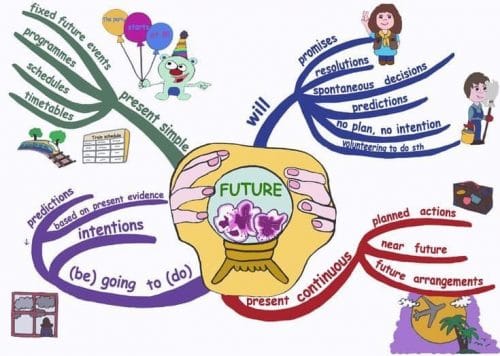future
I am leaving tomorrow. = I’ve already bought my train ticket.
We‘re having a staff meeting next Monday = all members of staff have been told about it.
She has a yoga class tomorrow morning.
The restaurant opens at 19.30 tonight.
Next Thursday at 14.00 there is an English exam.
The plane leaves in ten minutes.
Simple prediction: There will be snow in many areas tomorrow.
Arrangements: I‘m meeting Jim at the airport.
Plans and intentions: We‘re going to spend the summer abroad.
Time-tabled events: The plane takes off at 3 a.m.
Prediction based on present evidence: I think it‘s going to rain!
Willingness: We‘ll give you a lift to the cinema.
An action in progress in the future: This time next week I’ll be sun-bathing.
An action or event that is a matter of routine: You‘ll be seeing John in the office tomorrow, won’t you?
Obligation: You are to travel directly to London.
An action or event that will take place immediately or very soon: The train is about to leave.
Projecting ourselves into the future and looking back at a completed action: A month from now he will have finished all his exams.
شما می تواتید در نحوه کاربرد زمان حال ساده را در مکالمه های زیر ملاحظه بفرمایید.

